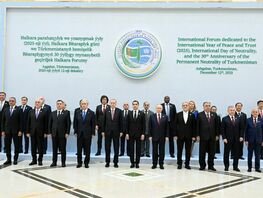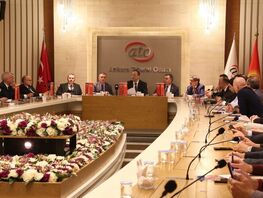«Number one challenge is the need to ensure not only sustainable, but also rapid economic growth in Central Asia,» Nikolai Podguzov, Chairman of the Board of the Eurasian Development Bank said, opening the Business Forum.
According to him, this is the basis for improving the quality of life in the region, as well as the role of Central Asia at the global level. GDP per capita in Central Asia has almost tripled since 2000. But even this growth is not enough to reach the level of development of countries.
«The gap in the level of development is the same three times. Poverty levels in some countries in the region are still quite high compared to the average for low- and middle-income countries. Sometimes you have to listen to the opinion that you can live on raw materials specialization, and develop industrial forces. But it is difficult to agree with such a thesis. Firstly, the path of raw material specialization is not available to all countries in the region. Secondly, the key to achieving rapid and sustainable growth is to increase the level of industrialization. The gap between the region’s level of industrialization and that of middle-income countries remains unfortunately significant in Central Asia. To reduce it, industrial production must increase almost 1.5 times,» Nikolai Podguzov emphasized.
He considers transport connectivity as another challenge in the region.
«Five out of five Central Asian states do not have access to the ocean. Remoteness from world markets and high transit costs impose serious restrictions on the development of countries. Trading costs are rising dramatically, by almost 40 percent, according to our estimates. What does this lead to? Margins and profits are shrinking, and it is difficult to integrate into global value chains. It’s too expensive and far away. Some manufacturing niches don’t even have a chance to emerge because the costs are too high. That is why the Eurasian Development Bank proposes the concept of a Eurasian transport network,» the head of the EDB said.
Improvement of the transport connectivity of Central Asian countries means reducing costs, and the region itself has a chance to become a transportation crossroads of Eurasia.
Nikolai Podguzov
According to him, this has never happened in Central Asia.
«Even in the times of the Silk Road, trade routes were latitudinal in the direction of West — East, and now median are added in the direction of North — South. This, in my opinion, is a historical chance for Central Asia,» Nikolai Podguzov concluded.






